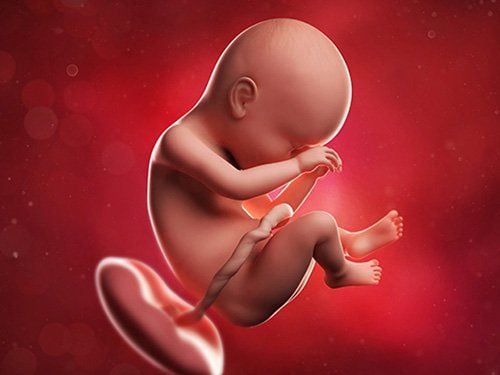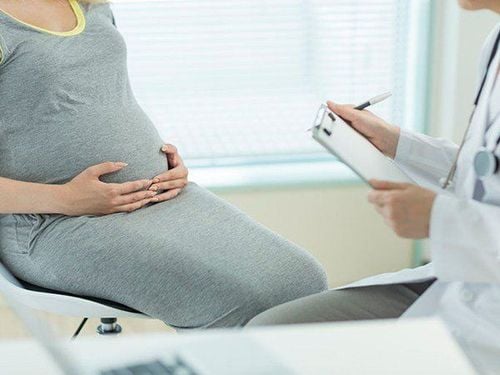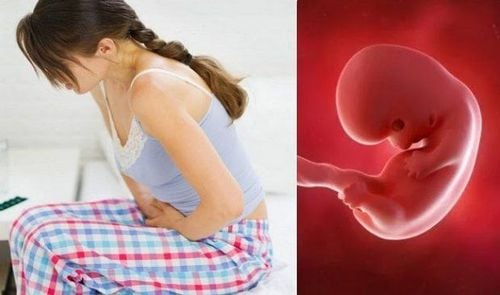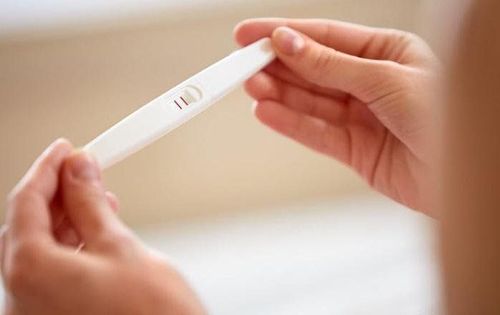This is an automatically translated article.
Usually, miscarriage symptoms will get worse as the miscarriage progresses in a negative direction. At that time, some signs such as bleeding, cramps will become more serious. Therefore, identifying the risk factors as well as the causes of miscarriage will help doctors and mothers find a timely support plan.
1. What is a miscarriage?
Miscarriage or spontaneous abortion is an event that results in pregnancy loss before 20 weeks of pregnancy. It usually occurs during the first trimester of pregnancy.
Miscarriage can happen for many medical reasons, including reasons of human control. But being aware of the risk factors, signs, and causes of this condition can help both the patient and the doctor find the right treatment.
2. Signs of miscarriage
2.1. Miscarriage symptoms Miscarriage symptoms often vary and depend on the stage of pregnancy. In some special cases it happens so quickly that you may not even know you are pregnant before you miscarry.

Triệu chứng sảy thai tùy thuộc vào từng giai đoạn của thai kỳ
Some symptoms of miscarriage:
Heavy spotting Vaginal bleeding Fluid from tissue or fluid from the vagina Severe abdominal pain or cramps Mild to severe back pain Decreased symptoms such as: loss of sensitivity breast or nausea If these signs appear, call your doctor immediately. Because these symptoms can be the risk of miscarriage.
2.2. Causes of Miscarriage While there are some things that increase your risk of miscarriage, it's generally not a result of what you did. During pregnancy, your body provides hormones and nutrients to your unborn baby that help your baby grow. Most miscarriages in the first trimester are due to abnormal fetal growth. There are different factors that can cause this problem:
Genetic or chromosomal factor : The chromosome holds the gene. In a developing fetus, one set of chromosomes is contributed by the mother and another set by the father. A few examples of what chromosomal abnormalities can cause:
Intrauterine fetal distress: embryo is formed but stops growing before you see or feel symptoms of pregnancy loss Damaged ovaries: out of shape embryo both Molar pregnancy: both sets of chromosomes come from the father so there is no fetal development. Partial molar pregnancy: maternal chromosomes are still present but father has provided two sets of chromosomes. In addition, errors can occur randomly when the cells of the embryo divide either by an egg cell or by a damaged sperm cell. Or placental problems can also cause miscarriage.

Nhau thai bất thường cũng có thể là nguyên nhân dẫn tới sảy thai
Living Conditions and Habits: Various underlying health conditions and lifestyle habits can also hinder fetal development. Exercise and consistent sex are not the cause of miscarriage either. Or working will not affect the fetus. Unless in the work environment you are exposed to harmful chemicals or radiation.
In addition, conditions that can interfere with fetal development include: poor diet in terms of quality and quantity of nutrients (causing malnutrition), drug or alcohol use, elderly mother, mother with untreated thyroid disease, hormone-related problems, uncontrolled diabetes, infections, trauma, obesity, cervical problems uterus (such as an irregularly shaped uterus), high blood pressure, food poisoning and certain medications...
3. Risk of miscarriage
Most miscarriages are caused by natural and irreparable causes. However, certain risk factors can increase the chance of miscarriage such as:
Trauma Exposure to harmful chemicals or radiation Drug use Abuse of alcohol Consuming too much caffeine Smoking Yes history of miscarriage Underweight or overweight Certain chronic, uncontrolled medical conditions such as diabetes, problems with the uterus or cervix. Advanced maternal age can affect and increase the risk of miscarriage. According to statistics, mothers over the age of 35 have a higher risk of miscarriage than younger mothers.

Lạm dụng thuốc là có thể là yếu tố làm tăng nguy cơ sảy thai
4. Some Types of Miscarriage
There are different types of miscarriage, depending on the symptoms and stage of pregnancy, the doctor will diagnose the miscarriage as one of the following:
Complete miscarriage: all tissues of the pregnancy the pregnancy has been expelled . Threatened miscarriage: Bleeding and cramping are two signs that indicate a possible miscarriage. Spontaneous miscarriage: the presence of bleeding, cramping and dilation of the cervix indicates an inevitable miscarriage. Septic miscarriage: signs of infection in the uterus.
5. Some measures to prevent miscarriage
Not all miscarriages can be prevented. However, you can take steps to help maintain a healthy pregnancy:
Get regular care before delivery and throughout your pregnancy Avoid alcohol, drug use, and smoking while you're pregnant. Maintain a healthy weight before and during pregnancy Avoid infections. Wash your hands well and stay away from people who are already sick Take prenatal vitamins to ensure that both you and your developing baby get enough nutrients Eat a healthy, balanced diet with lots of fruits and vegetables Be Always remember, just because your first miscarriage doesn't mean you won't be able to conceive again. Most women who miscarry have healthy babies in the future. Therefore, early recognition and treatment of symptoms will help prevent miscarriage better.
To ensure the best reproductive health, before planning your next pregnancy, you should check your reproductive health, maintain an appropriate nutrition regimen to ensure adequate nutrition for both mother and child. little.
Please dial HOTLINE for more information or register for an appointment HERE. Download MyVinmec app to make appointments faster and to manage your bookings easily.
Reference source: webmd.com












